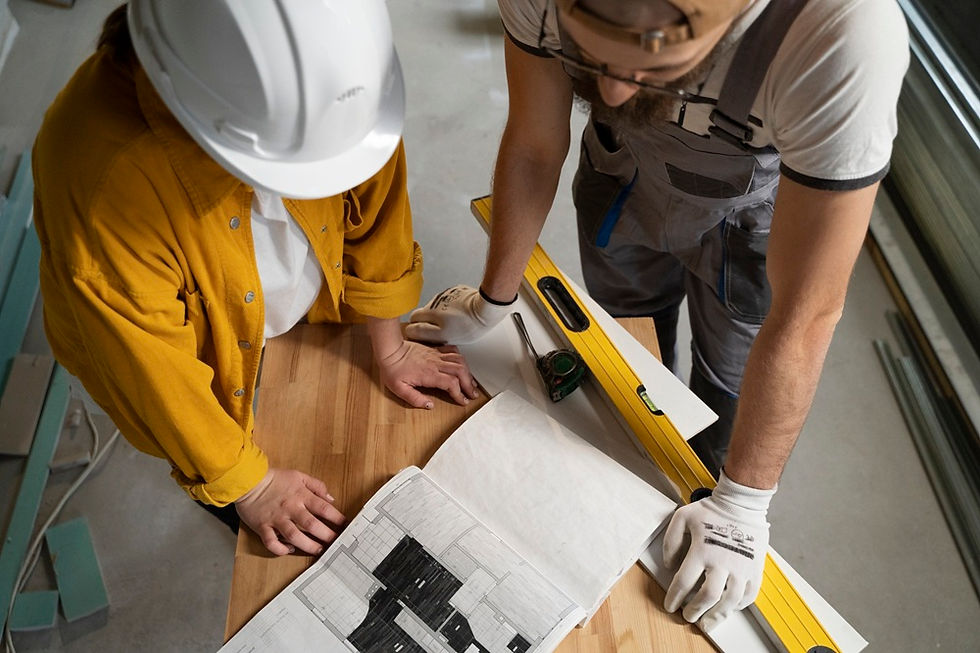Understanding The Importance Of Soil Testing For Construction Projects
- Ashley Kinsela
- Feb 26, 2024
- 4 min read
Updated: Jun 18, 2025
Imagine this, you've found your dream block of land, and you're mentally picturing your beautiful home taking form on this very spot. You're all set with your design plans, blueprints, and an eager construction team waiting for that first groundbreaking moment. But wait! Have you considered the earth beneath your feet? More importantly, have you taken the time to understand what it comprises of and how it might impact your construction project? Well, if you haven't, it might be time to delve a bit deeper.
Welcome to the world of soil testing, an often overlooked, but vital part of setting up a stable and long-lasting foundation for any construction project. Many of us may not know this, but the soil on which we construct our dream projects can be quite unpredictable and, at times, unsupportive. This is where soil testing becomes an indispensable ally.

In today's read, we'll navigate through the essentials of soil testing, assisting you in understanding its relevance, methodology, and how it can dictate the success of your construction project.
The Science and Importance of Soil Testing
So, why is soil testing so important? It's simple, really. Soil testing provides vital information about the ground beneath your property, helping identify possible issues that may disrupt your construction project. It's an investigative effort that offers valuable insights about the soil's bearing capacity, which is its ability to support loads without causing severe deformation.
Examining soil types, composition, compaction, and load-bearing capacity are just some of the aspects of soil testing. The information gathered from these tests will inform your construction approach, suggesting suitable foundation types and construction techniques based on your soil's characteristics.
Taking the time for soil testing is not just about ticking a box in construction compliance; it's about ensuring your structure’s longevity and stability. It's about understanding that you are building something that's going to last and provide a safe space for its inhabitants.
The ABCs of Soil Testing: What, When and How?
When undertaken correctly, soil testing can identify potential problems in the earliest stages. But what does it specifically entail? It involves collecting soil samples from multiple points and depths at your site, then analyzing them in a laboratory to determine specific characteristics.

When should soil testing be done? Ideally, keep it as the first task even before finalizing your construction design. Knowing the soil composition on your site can significantly influence the building's design, specifically, its foundation and load-bearing structures.
The 'how' of soil testing is typically best left to reputable geotechnical engineering firms. Their experts use a variety of sophisticated tools, ensuring accuracy while adhering to specific state and national standards.
Navigating Soil Challenges
Sometimes, the soil test might throw back some unpleasant surprises—clay-heavy soils, expansive soils, or even sites prone to seismic activity. But don't panic. Knowledge is power, and knowing the soil's characteristics equips you with the information to combat likely issues effectively.
With a thorough soil test in hand, you can brainstorm with your architect, engineer, or builder for design modifications. There are several well-established construction techniques to navigate these challenges, ensuring a sturdy and stable building.
Soil Testing: Pros and Cons
With its purpose and execution explained, it's time to look at the perks and downsides of soil testing for construction. On the plus side, it provides a sense of security, foreseeing potential issues and giving an opportunity to amend your building plan accordingly. Moreover, rectifying a structural issue after construction is often a time consuming, expensive, and stressful endeavor - soil testing helps minimize such possibilities.
On the downside, a thorough soil test can add a noticeable amount to your overall building expenditure. Additionally, if major issues are discovered, your project timeline might extend as you plan and execute solutions.
Understanding the Soil Report
A good soil report is not just a heap of numbers and scientific jargon. It is a foundation blueprint, listing the soil types, their depths, and how these characteristics might affect the construction. It provides specific recommendations for construction, including suitable foundation designs and precautions to take.
Remember, understanding your soil report is crucial to the success of your project, so do take your time to grasp the contents, or consult with a professional who can guide you through this process.
Conclusion: Why Ignoring Soil Testing Is Not an Option
In conclusion, soil underneath your construction site can be your best ally or worst enemy. Proper soil testing paves the way for informed decision-making. It unveils the hidden attributes of your site and guides the construction strategy, giving you peace of mind about your investment's safety.
Yes, it can be a costly affair in the beginning, but consider it a long-term investment towards stability and durability. Sure, it might delay your project a tad, but isn't it better to face a postponement now rather than a serious issue down the line? So, before you begin your next construction project, remember to show a little appreciation for the humble soil. Test it, understand it and let it guide you in building a solid and secure structure.




Comments